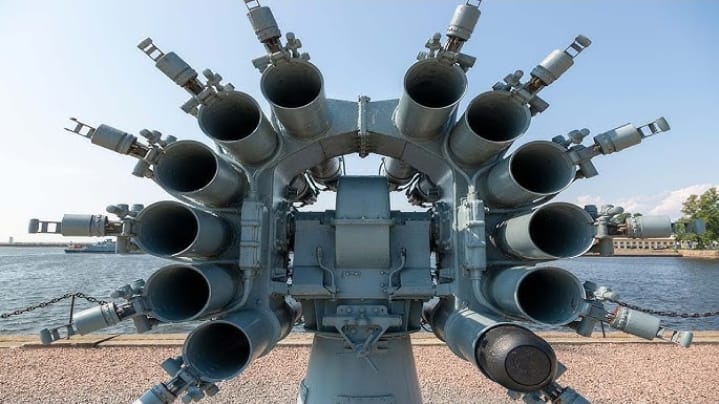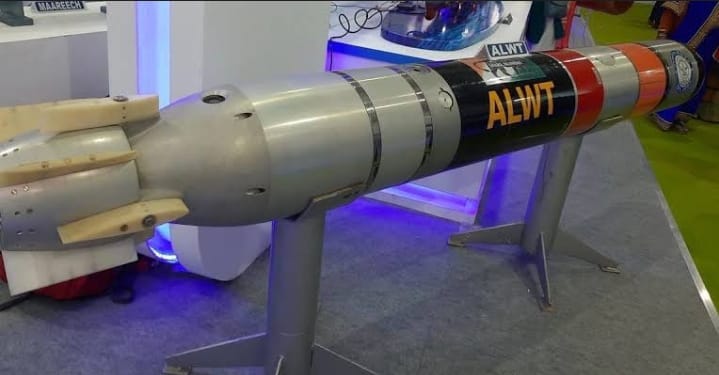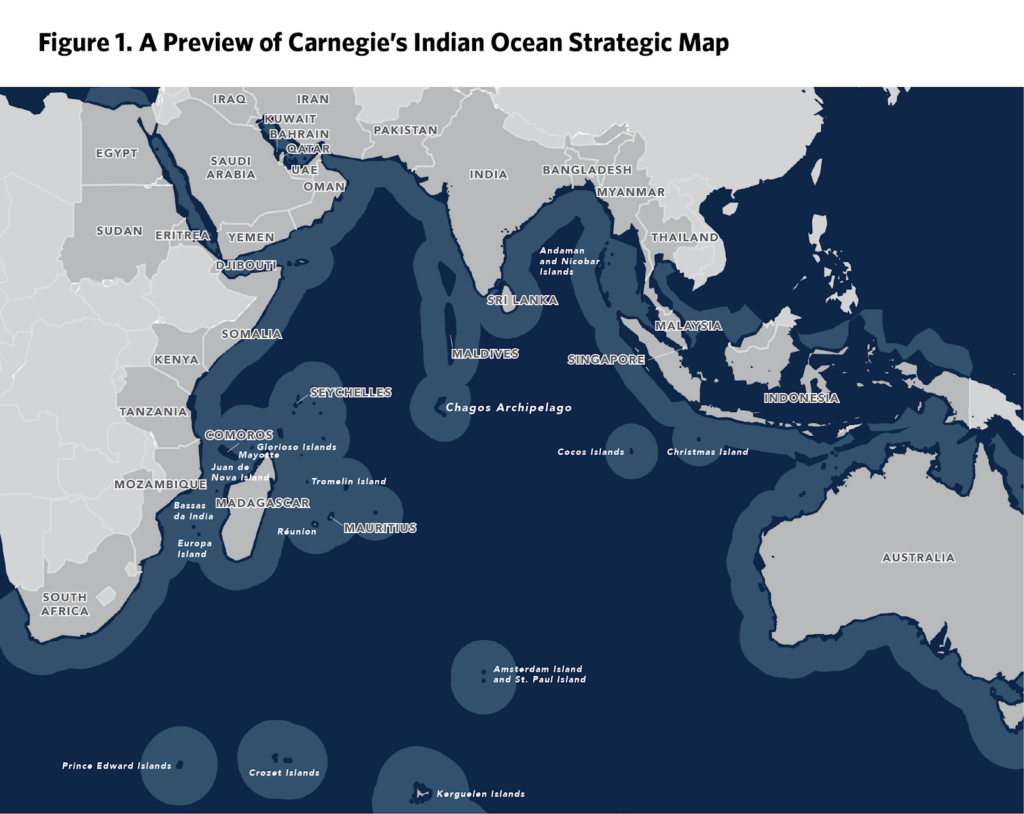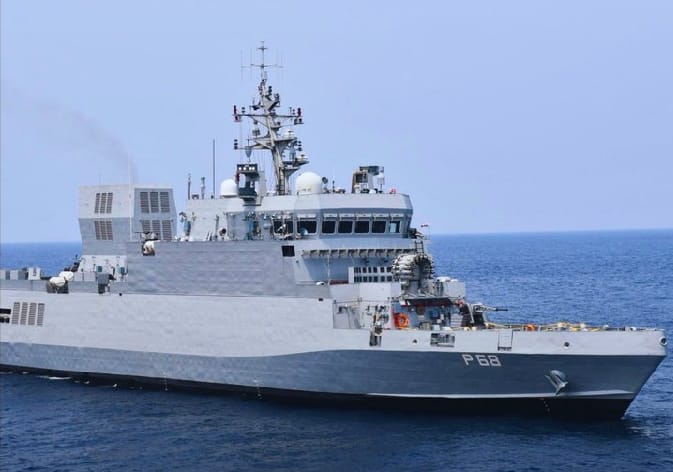– By Pratik
The India Navy commissioned INS Androth, the second vessel of the Arnala-class of Anti-Submarine Warfare Shallow Water Crafts (ASW-SWC) on October 6, 2025. This state-of-the-art submarine hunter is specifically designed and engineered with the aim of protecting India’s littoral zones and coastal areas.
Named after Androth Island of the Lakshwadeep archipelago, it has been manufactured by Garden Reach Shipbuilders & Engineers. It boasts an impressive ratio of 80% indigenous content, carrying forward the mantle of Aatmanirbhar Bharat.
The Arnala-class ASW-SWC project was initiated to replace the aging fleet of Soviet-era Abhay-class corvettes. Out of the 16 ASW-SWC vessels that were sanctioned for procurement, 8 are being constructed by GRSE and the remaining 8 by Cochin Shipyard Limited. Estimated cost of each ship is approximately Rs. 789 crores.
Specifications
At 77.6 meters length and displacement of about 900 tonnes, INS Androth packs a lot of power with the ability to reach a maximum speed of 25 knots. It is powered by 3 marine diesel engines connected with 3 water jets. Water jet propulsion offers greater manoeuvrability in shallow water and a superior stealth profile, making it harder to detect by enemy submarines. According to GRSE, Defence Minister Rajnath Singh awarded both Androth and GRSE the title of “Most Silent Ship” under the Raksha Anveshan Ratna recognition.
INS Androth has a range of 1800 NM at 14 knots, the ability to carry a crew of 57 personnel and 1 Rigid Hull Inflatable Boat (RHIB).
Operational Profile
The Androth‘s core function is singularly focused on Anti-Submarine Warfare (ASW). It will not only serve as a Search Attack Unit (SAU), but also co-ordinate anti-submarine operations with other aircrafts.
Its water jet enabled propulsion allows it to maintain a superior stealth profile even in shallow coastal waters. Its low acoustic signature and sensors will allow it to maintain superior underwater domain awareness (UDA) in India’s coastal areas.
Its modern communication system, robust sensor suite and RHIB will also allow it to conduct maritime surveillance, search and rescue (SAR), coastal defence operations as well Low-Intensity Maritime Operations (LIMO) such as counter-piracy, anti-smuggling and anti-infiltration duties.
Sensors, Radars, and Subsystems
INS Androth has the following state-of-the-art subsystems that underpin its operational effectiveness:
IAC MOD ‘C’ suite developed by Bharat Electronics Limited (BEL) computes Fire Control Solutions and facilitates firing of ASW weapons such as torpedoes and rockets. In addition, the system facilitates countermeasure capability for incoming torpedoes through decoy launching system.
Abhay Hull-Mounted Sonar (HMS) is an advanced active-cum-passive integrated sonar system designed and developed by NPOL, DRDO and manufactured by BEL. It is capable of detecting, localizing, classifying, and tracking sub-surface and surface targets in both its active and passive modes of operation.
Low Frequency Variable Depth Sonar (LFVDS) procured from a partnership firm formed by Indian CFF Fluid Control Ltd. and German Atlas Elektronik, a division of Thyssenkrupp Marine Systems (TKMS). The LFVDS is towed behind the warship, which extends its detecting range. Its variable depth allows it to operate at depths optimal for travelling of sound sans surface noise and low frequency operations allows the sonar to penetrate deeper into the water.
Underwater Acoustic Communication System (UWACS) enables secure and covert communications with other ASW assets and ground control without alerting an adversary.
Other sensors in its repertoire include two navigation radars, EW suites including R-ESM system and C-ESM/COMINT system.
Armament and Countermeasures
The weapon suite is designed to address sub-surface threats, while retaining capability for self-defence against surface and air targets.
Forward mounted 12-tube RBU-6000 Anti-Submarine Rocket Launcher (ASRL) is a turret-mounted system designed to launch saturation attacks via a large salvo of depth-charge rockets.

Two sets of Triple Lightweight Torpedo Launchers (324 mm) equipped to fire modern, lightweight torpedoes for precision strikes against sub-surface targets.

INS Androth has a 30mm Naval Surface Gun (NSG) to address surface threats as well as function as a Close-In Weapons System (CIWS). Two 12.7mm Stabilized Remote Control Gun (SRCG) systems can offer close range defence and address unconventional threats such as swarm drones. Mine-Laying Rails will allow the warship to restrict the movement of enemy naval forces especially around maritime choke points.
INS Androth’s Torpedo Decoy Launching Systems (DLS) enable it to rapidly launch acoustic countermeasures, to lure incoming enemy torpedoes away from the warship.
Primary Targets

(India’s maritime neighbourhood, Source: Carnegie Endowment)
The primary adversaries for INS Androth and all the other ships of the INS Arnala class will be Chinese Type 039A Yuan-class submarines. The Yuan class submarines were primarily designed to operate in shallow waters for long duration patrols. Its teardrop hull, noise-reduction techniques and anechoic tiles give it a very stealthy profile. It has the capacity to launch mines and heavy weight torpedoes. The Type 039B comes equipped with AIP systems that increase their effectiveness even further.
The export version of these submarines is called the Hangor-class, eight of which are expected to be delivered to Pakistan by 2028. Pakistan additionally operates Khalid-class Agosta 90B submarines. They were recently upgraded by Turkey and are capable of operating in shallow waters.
Tackling sub-surface threats are among the most complex engineering challenges and it is great that India has made strides in that regard as India’s primary adversaries on land are increasingly going to be India’s adversaries in the maritime domain as well.
Alfred Mahan, the renowned naval historian wrote in his book “The Influence of Sea Power upon History “, published in 1890 that: whoever rules the waves rules the world. Defending its own coast via Sea Denial is one of the first steps for any aspiring great power before it tries to project power beyond its proximate seas. And in that regard, the induction of INS Androth along with the remaining ships of INS Arnala class and INS Mahe class will greatly enhance maritime security and deterrence along India’s 7,500 km coastline. The fact that the warship incorporates over 80% indigenous content is a testament to the growth of India’s domestic defence-industrial base.
